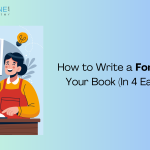When we think about disruption, we frequently envisage corporate changes, such as Uber challenging the taxi industry or Netflix upending traditional television. But what about the literature? Can the world of words be upset, too? Absolutely! Disruptive innovation in literature challenges established standards, resulting in new reading experiences and narrative structures that engage readers in novel ways. It challenges traditional storytelling techniques and expands the scope of what literature may be.
In this essay, we’ll look at how disruptive innovation is breaking down established narrative patterns in literature, transforming how stories are delivered and experienced by readers.
The Traditional Narrative Forms in Literature
For centuries, writing took a typical route. Stories were told with distinct beginnings, middles, and finishes, based on linear plots and well-defined characters. Traditional forms of literature relied heavily on the principles of grammar, syntax, and structure that govern written language.
Linear Storytelling: Linear narrative, the most frequent kind, moves forward in a straightforward fashion, with events occurring in chronological sequence. Think about famous novels like Jane Austen’s Pride and Prejudice and Herman Melville’s Moby-Dick. These works take a predictable path, allowing readers to easily follow the plot from beginning to end.
Conventional Plot Structures: Most conventional stories follow the three-act structure, with a distinct setup, conflict, and resolution. The protagonist undergoes a series of trials that culminate in a climactic moment and a resolution.
The Role of the Author and Reader: In traditional literature, the author is the omniscient creator, while the reader is a passive spectator. The relationship between the two is straightforward: authors create the world, while readers absorb it.
You may also read: Round vs Flat Characters in fiction: Differences and Examples
Defining Disruptive Innovation in Literature
Key Characteristics of Disruptive Literary Innovation:
Non-linearity
Non-linearity is a major feature of disruptive literary innovation, in which the plot does not unfold in a traditional, chronological order.
Instead, events may be given out of order or from several perspectives, requiring readers to piece the story together. This non-linear style deviates from traditional storytelling by stressing themes, emotions, and character development above a set timeline.
Authors such as Virginia Woolf and William Faulkner exploited nonlinearity to create more complex and immersive experiences, stretching boundaries and promoting greater reader interaction.
Genre Blending
Genre mixing is a major feature of disruptive literary innovation, in which writers combine aspects from other genres to produce new, surprising stories.
Authors break out from typical genre limits by combining, say, science fiction and romance or horror and humor, providing readers with fresh experiences. This innovation challenges traditional assumptions by allowing for a more nuanced, dynamic narrative that represents the many realities of modern life, making it both fascinating and thought-provoking.
Meta-narratives
Meta-narratives are stories that comment on or challenge the nature of storytelling itself. In literature, they challenge traditional forms by focusing on the structure and method of narration.
Meta-narratives frequently break the fourth wall or contain self-aware commentary, making the reader aware of the story’s structure. This novel method questions traditional storytelling, allowing readers to consider how narratives impact our view of reality. Meta-narratives have been utilized by great authors such as Italo Calvino and Jorge Luis Borges to challenge established literary rules.
You may also like: Top 10 Facebook Ad Strategies Every Author Should Know
You may also like: Realistic Fiction: Definition, Key Elements and Examples
Historical Context of Innovation in Literature
While disruptive innovation might seem like a recent phenomenon, it has roots in early 20th-century literature.
The Rise of Modernist Literature: Authors such as James Joyce, Virginia Woolf, and Franz Kafka began to challenge established storytelling conventions. They concentrated on stream-of-consciousness tales and fractured plots, emphasizing the inner workings of the mind rather than a sequential, outward story.
Stream of Consciousness and Fragmentation: In works such as Joyce’s Ulysses and Woolf’s Mrs. Dalloway, the narrative shifts between individuals’ thoughts, memories, and experiences, disrupting the typical flow of events. The structure was unorthodox, frequently forcing readers to decipher meaning.
You may also like: Fifty Shades of Grey: Book Review | BlueRoseOne
Notable Examples of Disruptive Innovation
James Joyce’s “Ulysses”: Joyce’s groundbreaking work isn’t just a narrative, it’s an experience. With its non-linear structure and complex use of language, Ulysses pushed the limits of traditional storytelling.
Virginia Woolf’s Experimentation: Woolf experimented with time and consciousness in novels like To the Lighthouse. Her unique narrative style made time and space fluid, allowing her to explore the inner lives of her characters in revolutionary ways.
William Faulkner’s Non-Linear Narratives: Faulkner’s works, such as The Sound and the Fury, broke away from traditional time structures, creating narratives that are circular and fragmented, offering a view of time as something more malleable.
You may also read: Character Descriptions 101: A Beginner’s Guide for Aspiring Writers
How Technology is Shaping Disruption in Literature
As we progress into the twenty-first century, technology continues to alter what literature is and how it is consumed.
The Rise of Digital Literature and E-books: E-books and digital storytelling have broken down the traditional boundaries of print. Writers are now allowed to experiment with multimedia components including hyperlinks, photos, and videos.
Interactive and Multimedia Narratives: Digital platforms provide new methods for readers to engage with content. Consider choose-your-own-adventure books or games like Bandersnatch, in which the reader chooses choices that alter the direction of the plot.
How Social Media Has Influenced Literary Forms: Twitter and Instagram have motivated authors to experiment with brevity and visual narrative.
You may also read: WhiteSmoke Review: Features, Pricing, Pros & Cons
You may also like: 100 Adjectives Start with Z (With Meanings & Examples)
Disruptive Innovation and Genre-Bending
Modern works are breaking the linear mold that was once the norm in storytelling.
Non-Linear Storytelling: Books like David Mitchell’s Cloud Atlas, which tells numerous interrelated stories in non-linear sequence, defy traditional storytelling.
Metafiction and Breaking the Fourth Wall: Disruptive authors frequently create works that admit themselves as fictional, blurring the boundaries between truth and narrative. This strategy was utilized by writers such as Italo Calvino and Jorge Luis Borges to raise questions about the nature of reality.
Fragmented and Unreliable Narrators: Works with fragmented narratives, such as The Catcher in the Rye or Fight Club, make readers wonder what is genuine and what isn’t, compelling them to actively engage in generating meaning.
You may also like: Print on Demand vs Traditional Publishing: Which is Right for You?
The Role of Readers in Disruptive Literature
Readers play an important part in disruptive literature by questioning conventional narrative frameworks. They contribute to the expansion of the possibilities of writing by engaging in unusual storytelling.
Readers who appreciate experimental forms and tales encourage authors to take creative risks, resulting in the development of new literary genres.
Their acceptance or rejection of these innovations impacts the future of literature, prompting writers to experiment with new ways to transmit stories and ideas while breaking free from established patterns.
The Impact of Disruptive Innovation on Literary Themes
Disruptive innovation in literature has transformed classic narrative formats, influencing the subjects covered in contemporary works. Writers are now experimenting with nonlinear storytelling, genre merging, and unorthodox structures.
This shift encourages readers to interact more directly with the text, which frequently explores themes of chaos, identity, and technology.
Disruptive innovation enables authors to push limits, bringing new views to age-old subjects like love, sorrow, and power, while also challenging established norms and presenting new ways to comprehend the human experience.
Challenges and Criticisms of Disruptive Literature
Disruptive literature challenges standard narrative forms, yet it also draws criticism. Some believe that it can be confusing or alienating for readers used to traditional storytelling.
Others argue that it stresses style over content, forsaking character development and plot for experimental tactics. Critics are also concerned that disruptive works may be difficult to understand or appreciate, restricting their appeal to a specific demographic. Despite these obstacles, disruptive literature pushes limits and inspires new perspectives on storytelling.
You may also like: What is Situational irony? Definition, Examples and Tips for Writers
The Future of Disruptive Innovation in Literature
The future of disruptive innovation in literature is exciting, as new technologies and ideas challenge classic narrative formats. With the growth of interactive storytelling, artificial intelligence, and digital publication, authors are looking for new methods to engage readers.
These advancements may result in more individualized, immersive experiences that defy the restrictions of linear storylines. As genres expand and hybrid formats arise, literature will continue to push the envelope, providing diverse and dynamic storytelling that reflects the changing world.
Conclusion
Frequently Asked Questions
Disruptive innovation in literature refers to new and unconventional storytelling techniques that challenge traditional narrative forms, such as non-linear plots, fragmented structures, and genre-blending.
Non-linear storytelling breaks away from chronological order, often jumping between time periods or perspectives, forcing readers to actively piece together the narrative.
Notable examples include Ulysses by James Joyce, To the Lighthouse by Virginia Woolf, and The Sound and the Fury by William Faulkner, which all broke from traditional narrative structures.
Technology, especially digital platforms and e-books, has enabled new forms of interactive storytelling, including multimedia narratives and choose-your-own-adventure formats.
Yes! As technology advances and readers seek more immersive experiences, literature will continue to evolve with new, disruptive forms of storytelling.
















